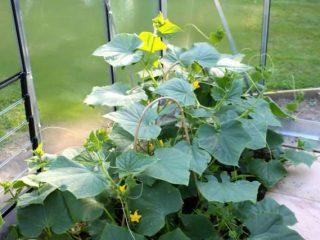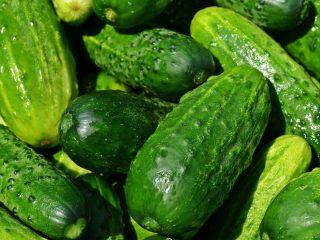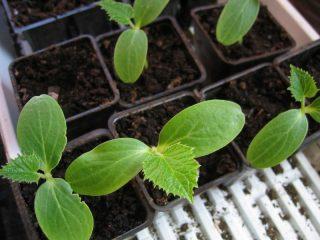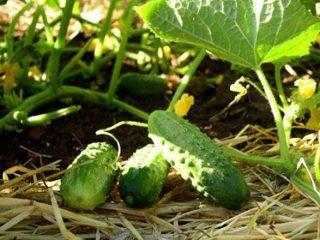Content
Gherkin cucumbers of Dutch selection always remain favorites in the garden. They are good when pickled and fresh, and the yield of cucumbers of these varieties is at the highest level. The description and reviews of the Pasalimo F1 cucumber only confirm this.
Description of Pasalimo F1 cucumbers
The first time people in Russia heard about these cucumbers was in 2005, when they were included in the State Register. Pasalimo cucumbers are grown everywhere, they are cultivated in greenhouses and open ground. The hybrid is suitable for small private farms and industrial cultivation. The originator of the variety is Syngenta Seeds B.V.
The Pasalimo cucumber is a parthenocarpic hybrid, which explains its versatility. Plants of the variety do not require pollination by insects. They begin to bear fruit early, and after 38-42 days the first harvest can be harvested. A new ovary is formed until frost.
The bushes are medium-sized, the central shoot has unlimited growth. The leaves are light green, pubescent, small. Tufted ovary type. Up to 6 fruits are formed in one sinus.
The fruits of the Pasalimo variety are gherkin-type, tuberous, one-dimensional. The average weight reaches 80 g.The ripe fruit is removed when its length reaches 5-8 cm. The skin of cucumbers is dense, dark green, pubescent, with blurred white stripes over the entire surface. To grow Pasalimo cucumbers, as in the photo below, you need to follow the recommendations from the description of the variety.
Taste qualities of cucumbers
The pulp of the Pasalimo cucumber at the genetic level is devoid of bitterness, dense, crispy.
This variety of cucumbers is suitable for fresh consumption and pickling. Pasalimo gherkins retain their taste well in jars.
Pros and cons of the variety
Pasalimo cucumbers retain their presentation for a long time and tolerate transportation well. They do not outgrow if they are left on the bushes and not collected in time. But these are not all the positive qualities of the hybrid; Dutch cucumbers have many advantages:
- high yield of commercial products;
- high productivity;
- versatility of cultivation;
- excellent plant immunity;
- small fruit size;
- excellent taste;
- marketable condition.
No shortcomings were noticed in the Pasalimo hybrid during the entire cultivation period.
Optimal growing conditions
Do not plant the crop in a draft or in acidic soil. The best place for a Dutch hybrid is a warm sunny area, well protected from cold winds. The soil in the garden bed should be fertile to a depth of 30 cm. When digging, you can add humus, peat, rotted sawdust, mineral complexes and ash.
Good predecessors of Pasalimo cucumbers in the garden:
- cabbage;
- tomatoes;
- eggplant;
- roots;
- greenery.
But you shouldn’t plant a hybrid after pumpkin crops. Plants have common diseases and pests, so avoiding them will be difficult.
Growing Pasalimo cucumbers
Pasalimo cucumber can be grown in seedlings or by sowing directly into the ground. The second method is more suitable for regions with warm climates, where spring is mild and frosts come late.
Direct planting in open ground
Since cucumbers are a heat-loving crop, seeds should be planted in the garden no earlier than May, when the soil warms up to a temperature of +15... +18°C. In this case, the ambient temperature during the day should be at +20... +22°С, and at night – not lower than +15°С.
Based on the characteristics of the Pasalimo cucumber, the distance between the seeds is 15-20 cm. Subsequently, the seedlings are thinned out, leaving the strongest ones. The distance between plants in a row should be 45-50 cm. The row spacing is wide - about 70 cm.
Pasalimo cucumbers are grown vertically. As it grows, the lash is directed and twisted around the trellis.
Growing by seedlings
The Pasalimo cucumber variety begins to bear fruit early, so it is sown for seedlings in late April or early May. It all depends on the growing region.
You can skip the preliminary preparation of seeds, since the originator claims that all the necessary procedures have been carried out in advance. For growing seedlings, choose containers with a volume of 500 ml. The soil must be loose and nutritious so that the seeds receive the maximum of nutrients.
After planting the Pasalimo cucumbers, the containers are covered with film and put in a warm place. Water the soil regularly so that it does not dry out. The first shoots will appear in 3-5 days. After which the film is removed and seedlings continue to be grown.
After 14 days, make the first fertilizing with mineral fertilizers.As soon as real leaves appear, the seedlings need to be accustomed to the environment - they are taken outside for a short time. A few days before transplanting, cucumbers should spend the whole night in the air.
Watering and fertilizing
In a permanent place, Pasalimo cucumbers need to be properly cared for in order to achieve a good harvest. Experienced gardeners advise monitoring soil moisture and promptly feeding plants with mineral and organic solutions.
You need to water the soil in your garden beds frequently to keep the soil moist at all times. During periods of drought, the bushes are mulched with humus to maintain soil moisture, otherwise the ovary will fall off and a new one will not appear.
Pasalimo cucumbers are fed every 10 days throughout the season. Mineral fertilizing alternates with organic matter. They use fertilizers with humates, ash, a decoction of green herbs, nettles, and yeast infusions.
Formation
In order for the harvest to be maximum, the Pasalimo cucumber bushes must be properly formed. After the 5-6th leaf appears, the main shoot is pinched to stimulate the growth of side shoots. It is on them that the main harvest will be formed in the future.
In addition, up to the 6th leaf, all flowers and side shoots must be removed. As the bush grows, the lower leaves are also trimmed so that the plants are well ventilated. Fruiting shoots are cut out to stimulate the growth of new ovaries. If the bush is formed correctly, it will bear fruit until frost.
Protection from diseases and pests
The description of the Pasalimo variety states that cucumber bushes have good immunity and resist the most common diseases:
- powdery mildew;
- cladosporiosis;
- cucumber mosaic.
However, improper care, watering with cold water, frequent precipitation, lack of sun and other reasons can trigger an outbreak of diseases. To prevent this, the bushes need to be sprayed with preparations containing copper.
Weakened plants are often attacked by pests such as aphids, spider mites and whiteflies. This significantly reduces the yield, so for the purpose of prevention, Pasalimo cucumbers are treated with folk remedies or chemicals.
Productivity
The productivity of Pasalimo cucumbers is high. According to reviews of this variety and photos that are replete with the Internet, in greenhouses and under film you can collect from 13 to 15 kg per square meter. m. In open ground, these figures are lower, but they still exceed the most famous varieties. The yield of commercial products reaches 96%.
Conclusion
Descriptions and reviews of the Pasalimo F1 cucumber indicate that the Dutch hybrid produces a stable harvest. The fruits are tasty and retain their quality well when pickled. Growing cucumber varieties is not difficult, just follow the general rules.









